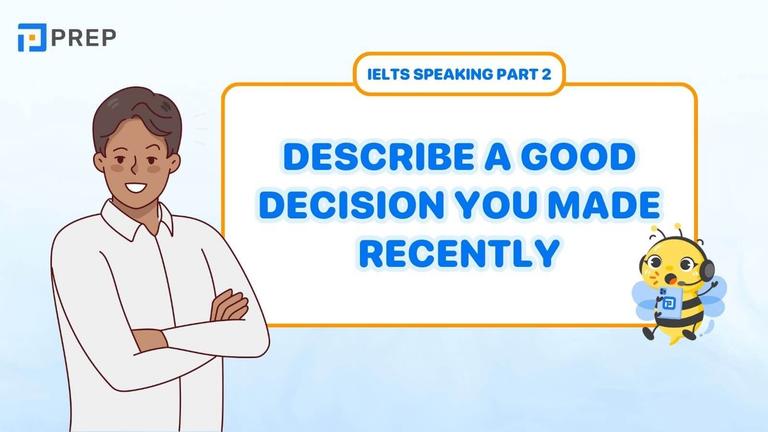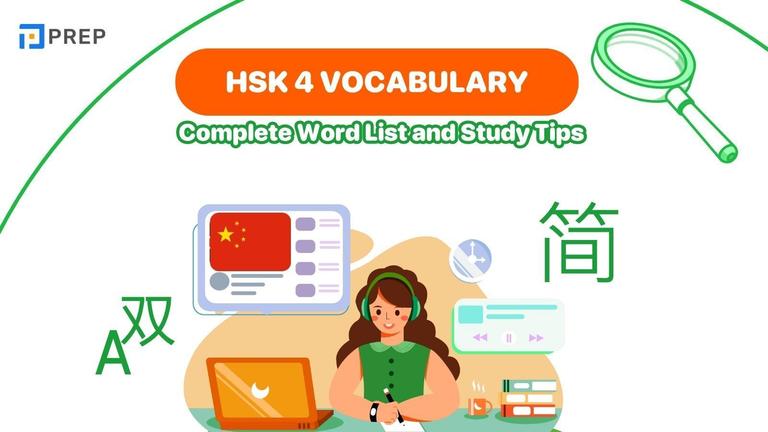Top Mandarin Pronunciation Apps to Improve Your Speaking
Struggling with Mandarin tones or unclear pronunciation? The right app can make a huge difference. In this guide, we review top-rated Mandarin pronunciation apps for learners at all levels—featuring voice feedback, tone drills, and real native examples.
- I. Top Mandarin Pronunciation Apps You Should Try
- 1. HelloChinese – All-In-One App for Gamified Learning
- 2. Pinyin Trainer – Best for Tone Listening and Recognition
- 3. ChineseSkill – Practical Speaking with Shadowing
- 4. Speechling – Smart Voice Feedback and Coaching
- 5. Tone Perfect – Best App for Practicing Tone Pairs
- 6. Glossika – Sentence-Based Repetition for Fluent Speaking
- II. Tips to Get the Most Out of Your Pronunciation App
I. Top Mandarin Pronunciation Apps You Should Try
Mastering Mandarin pronunciation—including tones, pinyin, and native-like clarity—can be one of the most challenging parts of learning Chinese. Whether you're preparing for the HSK exam or simply want to sound more natural in conversation, the right Mandarin pronunciation app can accelerate your progress dramatically.
Below are some of the best apps designed specifically to help you improve your Chinese pronunciation, each with its own strengths—from beginner tutorials to AI-based voice feedback.
1. HelloChinese – All-In-One App for Gamified Learning
HelloChinese is one of the most popular Mandarin learning apps—and for good reason. Designed with beginners in mind, it offers a friendly, well-structured interface, and turns learning Chinese into a fun, game-like experience. But beyond vocabulary and grammar, HelloChinese also includes solid pronunciation features that make it a helpful Mandarin pronunciation app for learners at early stages.
The app introduces pinyin and tones right from the start, integrating pronunciation practice into every lesson. One of its most accessible features is voice recognition, which allows you to practice speaking and get real-time feedback. While the speech-scoring system is relatively basic compared to apps like Speechling, it’s accurate enough for daily tone and clarity improvement, especially for HSK1–3 learners.
In addition to pronunciation, HelloChinese allows you to:
- Repeat after native audio at comfortable speeds
- Practice dialogues in real-world scenarios
- Learn through interactive sentence-building and listening games
If you're looking for an all-in-one solution that covers reading, listening, speaking, and pronunciation—with plenty of gamified motivation—HelloChinese is a smart starting point.
2. Pinyin Trainer – Best for Tone Listening and Recognition
Pinyin Trainer is a simple but highly effective Mandarin pronunciation app developed by the creators of TrainChinese. It is specifically designed to help learners master one of the hardest aspects of Mandarin pronunciation: tone recognition.
Instead of focusing on full vocabulary or full sentences, Pinyin Trainer drills your ability to recognize and distinguish the different tones—first, second, third, and fourth—through focused listening practice. The app includes minimal pair tests, where you’ll hear two similar syllables (like “ma1” vs “ma3”) and have to correctly identify the tone. This makes it ideal for improving both your ear and your tonal precision.
Key features include:
- Audio drills for hundreds of pinyin syllables
- Focused tone pair comparisons and quizzes
- Listening-only mode to strengthen ear training
- Ideal for early learners and HSK 1–2 prep
While Pinyin Trainer doesn’t offer speaking or voice feedback functions, it shines at what it does best: helping you hear the difference between tones with repetition and targeted listening. It’s a great pronunciation companion app to use alongside a more comprehensive learning platform.
3. ChineseSkill – Practical Speaking with Shadowing
ChineseSkill is a comprehensive learning app that covers vocabulary, grammar, and sentence structure—but it also offers solid value as a Mandarin pronunciation app, particularly for learners who want to practice speaking more naturally.
What sets ChineseSkill apart is its focus on practical exercises that encourage repetition and shadowing. In many lessons, users are prompted to listen and repeat after native audio, reinforcing pronunciation and rhythm through short, everyday dialogues. The audio is recorded in standard Mandarin, making it a useful model for tone accuracy and sentence pacing.
Key features that support pronunciation:
- Repeat-after-me drills that develop reflexive speaking
- Shadowing exercises embedded into lesson formats
- Themed content (e.g., family, eating, greetings) ensures practical usage
- Offline access allows for on-the-go speaking practice
While it doesn’t include AI feedback or advanced speech recognition, ChineseSkill is ideal for beginners who want to start speaking out loud confidently, especially as part of daily review cycles. Combined with a tone-focused app, it becomes a powerful pronunciation practice partner.
4. Speechling – Smart Voice Feedback and Coaching
Among all the Mandarin pronunciation apps available, Speechling stands out for combining advanced AI speech analysis with human coach feedback, making it one of the most comprehensive solutions for serious learners.
Instead of treating pronunciation as an isolated skill, Speechling emphasizes speaking fluency at the sentence level, helping learners build confidence and accuracy at the same time. The app provides native Mandarin audio for each sentence, then prompts you to record your own version. Your recordings are analyzed by an AI system—but more importantly, they're also reviewed by a certified coach who gives personalized voice feedback within 24 hours.
Core features that support pronunciation include:
- Record-and-compare tools with native speaker models
- Written and audio corrections from real coaches
- Daily speaking goals with progress tracking
- Sentence-based practice aligned with HSK vocab levels
Speechling is free to use with generous daily limits, while premium plans unlock unlimited feedback. It’s especially well-suited for intermediate learners and anyone preparing for HSK speaking tests or aiming for native-like fluency.
If you're looking for a Mandarin pronunciation app that actually listens and talks back, Speechling brings you as close as possible to having a personal tutor—on your phone.
5. Tone Perfect – Best App for Practicing Tone Pairs
If you're consistently struggling with Mandarin tones—even after learning pinyin—Tone Perfect may be exactly what you need. Unlike many general learning platforms, this Mandarin pronunciation app focuses entirely on one thing: tone training, especially through the use of tone pairs.
Tone Perfect provides high-quality, native speaker audio so learners can hear tones in context and improve their perception of tone combinations, which are much harder to distinguish than individual tones. You’ll learn how the tones shift naturally in two-syllable words, helping you avoid common pronunciation errors such as tone merging, tone confusion, or flat intonation.
Highlights of the app include:
- A library of high-frequency tone pairs with native speaker recordings
- Ability to listen, repeat, and track which tone combinations you find hardest
- Standard Mandarin pronunciation (Beijing accent)
- Web-based interface, accessible on desktop or mobile browsers
Although Tone Perfect doesn’t include advanced speaking interaction or gamified lessons, it is incredibly effective during focused pronunciation drills—particularly in the early stages. For learners aiming to build a strong tonal foundation or correct long-standing tone habits, it’s one of the best specialized tools available.
6. Glossika – Sentence-Based Repetition for Fluent Speaking
If your goal is to move beyond single-world pronunciation and speak full Mandarin sentences fluently, then Glossika is a powerful choice. It’s not a traditional learning app with vocabulary lists or grammar tips—instead, it uses sentence-based shadowing and spaced repetition to help you internalize natural speech patterns.
Glossika works by having you listen, repeat, and record full sentences spoken by native speakers. The sentences are drawn from everyday situations, meaning you’re learning vocabulary, pronunciation, intonation, and sentence structure all at once. You can replay sentences as many times as needed and compare your recording with the original audio for self-correction.
Notable pronunciation-focused features include:
- Shadowing exercises at natural speaking speed
- Emphasis on correct tone and rhythm at the sentence level
- Audio from native speakers in standard Mandarin
- Personalized spaced repetition schedule to enhance memory
While Glossika may not provide direct tone drills or instant AI feedback like some other Mandarin pronunciation apps, it’s ideal for intermediate learners who want to strengthen their fluency, listening comprehension, and prosody in an immersive way.
By focusing on contextual pronunciation, Glossika trains your ear, tongue, and mind simultaneously—bridging the gap between “knowing the tones” and truly speaking like a native.
II. Tips to Get the Most Out of Your Pronunciation App
Downloading a Mandarin pronunciation app is just the first step. To truly improve how you sound, you need to form consistent learning habits and use each tool strategically. Whether you're just getting started or refining advanced tone accuracy, the following tips will help you maximize your results and avoid common pitfalls.
Combine Daily Practice with Active Speaking
Passive listening isn’t enough when it comes to learning pronunciation. Make it a habit to speak aloud every day:
- Use the app’s repeat-and-record functions to practice mimicking native pronunciation
- Set aside 10–15 minutes daily to focus only on tones and clarity
- Review pronunciation sub-skills step by step—start from pinyin, move to tone combinations, then full sentences
The key is repetition with intention. Small, consistent effort outperforms occasional long sessions.
Use Flashcards for Reinforcement
Apps help with listening and speaking, but flashcards complement this with visualization and memory recall:
- Create flashcards that include the Chinese character, pinyin with tone marks, and English meaning
- Use tools like Anki or Quizlet with audio support to reinforce pronunciation visually and aurally
- Review tone groups (e.g., third tone + first tone, fourth + second) to lock in clarity
Flashcards work great when you’re away from your app or want to supplement with offline practice.
Practice Shadowing with Real Sentences
Once you're confident with syllables and tones, you should start shadowing full sentences:
- Choose short, high-frequency sentences from the app
- Play the audio and speak at the same time (match pace, tone, flow)
- Record and compare your version to the native audio
Apps like Glossika and Speechling are purpose-built for sentence-level pronunciation practice using this method. Shadowing helps you move from accurate pronunciation to natural speech rhythm.
Improving your pronunciation is one of the most powerful steps toward sounding confident in Mandarin. With the right Mandarin pronunciation app, you can build tone accuracy, speech clarity, and natural rhythm—one practice session at a time. Keep refining your skills with more pronunciation tips, tone strategies, and learner-friendly tools here at PREP.

Hi I'm Chloe, and I am currently serving as an Product Content Administrator at Prep Education. With over five years of experience in independent online IELTS study and exam preparation, I am confident in my ability to support learners in achieving their highest possible scores.
Comment
Premium content
View allPersonalized roadmap
Most read












